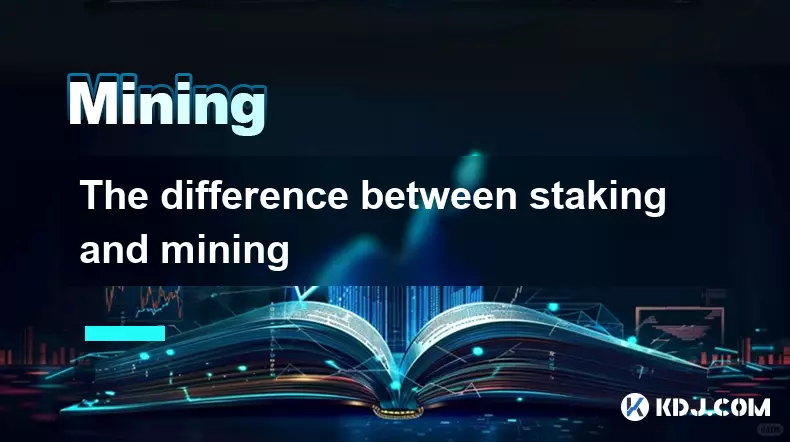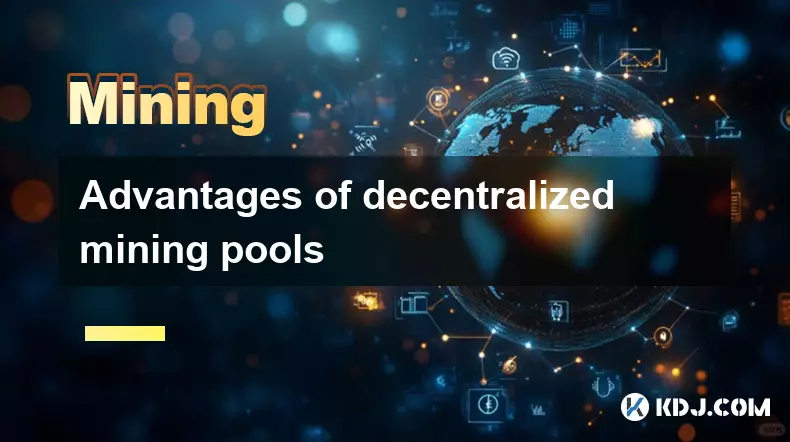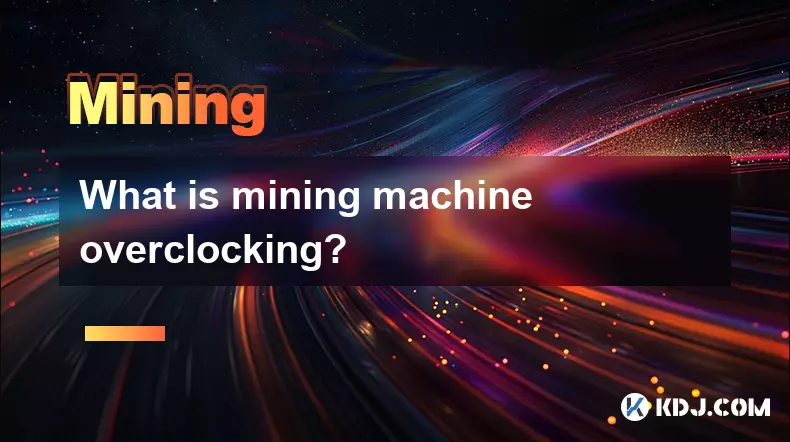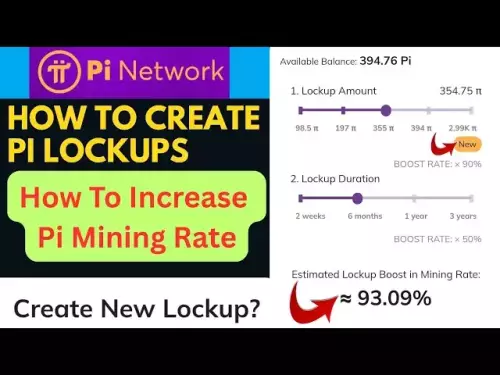-
 bitcoin
bitcoin $114779.865156 USD
2.30% -
 ethereum
ethereum $4226.519789 USD
2.39% -
 tether
tether $1.000545 USD
0.04% -
 xrp
xrp $2.890223 USD
0.92% -
 bnb
bnb $1030.029301 USD
2.95% -
 solana
solana $212.824944 USD
1.69% -
 usd-coin
usd-coin $0.999757 USD
0.01% -
 dogecoin
dogecoin $0.234961 USD
-0.27% -
 tron
tron $0.337174 USD
0.42% -
 cardano
cardano $0.804783 USD
0.09% -
 hyperliquid
hyperliquid $45.748770 USD
-2.85% -
 chainlink
chainlink $21.699170 USD
0.82% -
 ethena-usde
ethena-usde $1.001452 USD
0.08% -
 avalanche
avalanche $30.237800 USD
1.14% -
 stellar
stellar $0.372604 USD
1.52%
How much internet speed do I need for mining?
A stable internet connection with low latency (<50 ms ping) is crucial for efficient cryptocurrency mining, even though bandwidth needs are minimal (as low as 1 Mbps down / 0.5 Mbps up).
Aug 06, 2025 at 06:57 pm

Understanding the Role of Internet in Cryptocurrency Mining
Cryptocurrency mining primarily relies on computational power to solve complex mathematical problems and validate transactions on a blockchain. While the core mining process is computation-heavy, the internet connection plays a supporting but crucial role. It enables communication between your mining rig and the blockchain network, ensuring that your device receives the latest block information and submits solutions (proof of work) promptly. A poor or unstable connection can lead to delays, resulting in rejected shares or reduced mining efficiency.
The internet does not directly influence hash rate—the speed at which your hardware solves cryptographic puzzles—but it does affect synchronization with the mining pool or node. If your connection is too slow or unreliable, your rig may fall behind in receiving new block data, making your efforts redundant by the time they are submitted. Therefore, while high bandwidth is not the primary requirement, a stable and responsive connection is essential.
Minimum Internet Speed Requirements for Mining
For most mining setups, especially those connected to a mining pool, the actual data transfer involved is minimal. Mining devices send small packets of data—essentially proof of work attempts—frequently to the pool server. These packets are typically just a few kilobytes in size. As such, the minimum download speed needed is as low as 1 Mbps, and upload speed should be at least 0.5 Mbps.
Even large-scale mining farms with dozens of rigs do not require gigabit internet. The total data usage for a single ASIC miner over a 24-hour period rarely exceeds 100 MB. This means that even a basic broadband connection can handle multiple mining devices simultaneously. What matters more than speed is latency and uptime. A connection with low ping to the mining pool server ensures faster submission of shares and reduces the chance of stale shares, which are invalid because a new block has already been found.
Impact of Latency and Connection Stability
Latency, measured in milliseconds (ms), refers to the time it takes for data to travel from your mining rig to the pool server and back. High latency increases the risk of your solution arriving too late, rendering it useless. For optimal performance, aim for a ping under 50 ms to your chosen mining pool. You can test this using tools like ping or traceroute in your command line.
- Use ping pool.example.com to check response time
- Select a mining pool geographically close to your location
- Avoid using public Wi-Fi or congested networks
- Prefer wired Ethernet connections over Wi-Fi for stability
Uninterrupted connectivity is equally important. Frequent disconnections cause your miner to miss block updates, leading to wasted computation. A 99%+ uptime on your internet service is ideal. Consider using a router with failover support or a backup connection if mining at scale.
Bandwidth Usage Across Different Mining Setups
The amount of bandwidth consumed depends on the type of mining operation and the protocol used. Below is a breakdown:
- Solo mining on Bitcoin: Requires downloading and verifying the entire blockchain, which exceeds 400 GB and grows over time. This demands higher initial bandwidth but stabilizes after synchronization.
- Pool mining with ASICs: Uses minimal bandwidth—approximately 10–20 KB per minute per device. A farm with 10 ASICs might use less than 1 GB per month in total.
- GPU mining for Ethereum (pre-Proof-of-Stake): Similar to ASIC pool mining, bandwidth needs were negligible, mostly for receiving work and submitting hashes.
- Mining on decentralized networks like Monero: Still low bandwidth, but slightly higher due to more frequent job updates.
Even in the most data-intensive scenario—initial blockchain sync—the process is a one-time event. After that, ongoing usage remains minimal. Therefore, high-speed fiber is not necessary unless you're also running a full node that relays data to other peers.
Optimizing Network Configuration for Mining Rigs
To ensure your mining operation runs smoothly, proper network configuration is critical. Start by assigning static IP addresses to your mining devices to prevent connection drops due to DHCP lease expiration. Access your router settings and reserve IPs based on the MAC addresses of your miners.
Next, configure port forwarding if required by your mining software or pool. Most pools use standard ports like 3333, 4444, or 5555 for Stratum protocol communication. Open these ports on your router and direct them to the internal IP of your miner.
- Log into your router’s admin panel
- Navigate to Port Forwarding or Virtual Server settings
- Add a new rule with external and internal port numbers
- Enter the static IP of your mining device
- Save and restart the router if needed
Use Quality of Service (QoS) settings to prioritize mining traffic, ensuring that other devices on the network don’t interfere. Disable unnecessary background updates on connected devices to reduce network congestion.
Special Considerations for Large-Scale Mining Farms
In industrial mining operations, network architecture becomes more complex. While individual rigs use little bandwidth, managing hundreds requires structured networking. Deploy managed switches to segment traffic and monitor performance. Use VLANs to isolate mining traffic from administrative systems.
Centralized monitoring tools like Awesome Miner or Minerstat communicate with rigs over the network, slightly increasing bandwidth needs. Ensure your local network can handle internal traffic between the control server and miners. Use gigabit switches even if internet speed is low, as internal communication benefits from faster LAN speeds.
For redundancy, implement dual WAN routers with load balancing or failover. This ensures continuous operation during ISP outages. Monitor uptime using ping scripts or network monitoring software to detect and resolve issues proactively.
Frequently Asked Questions
Can I mine cryptocurrencies using mobile data?Yes, but it's not recommended. While the data usage is low, mobile networks often have high latency and data caps. Exceeding your data limit can result in throttling or extra charges. Also, signal instability increases the risk of disconnected sessions and stale shares.
Does upload speed matter more than download speed for mining?Upload speed is slightly more important because your miner sends proof of work to the pool. However, since each upload is tiny (a few KB), even 1 Mbps upload is sufficient. What matters most is consistent low latency, not raw speed.
Will using Wi-Fi affect my mining performance?Wi-Fi can introduce packet loss and latency spikes, especially in congested environments. For best results, use Ethernet cables to connect your miners directly to the router or switch. If Wi-Fi is unavoidable, ensure strong signal strength and minimal interference.
Do I need a static IP address from my ISP to mine?No, a static public IP is not required. Most mining pools work with dynamic IPs. However, assigning static local IP addresses to your mining devices within your private network helps maintain stable connections and simplifies port forwarding.
Disclaimer:info@kdj.com
The information provided is not trading advice. kdj.com does not assume any responsibility for any investments made based on the information provided in this article. Cryptocurrencies are highly volatile and it is highly recommended that you invest with caution after thorough research!
If you believe that the content used on this website infringes your copyright, please contact us immediately (info@kdj.com) and we will delete it promptly.
- Bitcoin, Ethereum, and Correction Concerns: Navigating the Crypto Seas
- 2025-09-30 08:25:12
- Meme Coins, Accumulation, and Smart Money: What's the Deal?
- 2025-09-30 09:25:12
- Swift, Consensys, and Blockchain Settlement: A New Era for Global Finance?
- 2025-09-30 09:10:01
- Crypto Price Surges: Is Grass the Best New Crypto to Buy?
- 2025-09-30 09:10:01
- Cloud Mining, Crypto Investments, and Future Trends: Navigating the Landscape in 2025
- 2025-09-30 09:10:01
- ATH Crypto's $344M DePIN Treasury: Aethir's Bold Plan and Market Impact
- 2025-09-30 08:45:14
Related knowledge

The difference between staking and mining
Sep 24,2025 at 05:18am
Understanding Staking in the Cryptocurrency Ecosystem1. Staking involves holding funds in a cryptocurrency wallet to support the operations of a block...

How to participate in testnet mining?
Sep 22,2025 at 09:18am
Understanding Testnet Mining in the Crypto Ecosystem1. Testnet mining is a method used by blockchain developers to simulate real-world conditions on a...

How to dispose of abandoned mining machines?
Sep 19,2025 at 08:19pm
Assessing the Condition of Abandoned Mining Rigs1. Begin by inspecting each mining machine for visible damage, corrosion, or missing components. Machi...

How to identify high-quality mining pools?
Sep 21,2025 at 03:19pm
Reputation and Track Record1. A mining pool’s reputation is built over time through consistent performance and transparency. Pools that have operated ...

Advantages of decentralized mining pools
Sep 20,2025 at 04:36pm
Enhanced Security and Resistance to Censorship1. Decentralized mining pools operate on blockchain-based smart contracts, eliminating the need for a ce...

What is mining machine overclocking?
Sep 21,2025 at 07:19pm
Understanding Mining Machine Overclocking1. Mining machine overclocking refers to the process of increasing the operating frequency of a cryptocurrenc...

The difference between staking and mining
Sep 24,2025 at 05:18am
Understanding Staking in the Cryptocurrency Ecosystem1. Staking involves holding funds in a cryptocurrency wallet to support the operations of a block...

How to participate in testnet mining?
Sep 22,2025 at 09:18am
Understanding Testnet Mining in the Crypto Ecosystem1. Testnet mining is a method used by blockchain developers to simulate real-world conditions on a...

How to dispose of abandoned mining machines?
Sep 19,2025 at 08:19pm
Assessing the Condition of Abandoned Mining Rigs1. Begin by inspecting each mining machine for visible damage, corrosion, or missing components. Machi...

How to identify high-quality mining pools?
Sep 21,2025 at 03:19pm
Reputation and Track Record1. A mining pool’s reputation is built over time through consistent performance and transparency. Pools that have operated ...

Advantages of decentralized mining pools
Sep 20,2025 at 04:36pm
Enhanced Security and Resistance to Censorship1. Decentralized mining pools operate on blockchain-based smart contracts, eliminating the need for a ce...

What is mining machine overclocking?
Sep 21,2025 at 07:19pm
Understanding Mining Machine Overclocking1. Mining machine overclocking refers to the process of increasing the operating frequency of a cryptocurrenc...
See all articles










































































